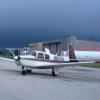always on +12V connection in dash - 63 M20C
-
Members Online
- UteM20F
- Greg Ellis
- Hank
- CCowboy
- kortopates
- N201MKTurbo
- bcg
- 201Mooniac
- DXB
- 00-Negative
- acekng1
- eman1200
- Crawfish
- redbaron1982
- dzeleski
- LANCECASPER
- DanM20C
- TheAv8r
- Donut
- GeeBee
- Ragsf15e
- PT20J
- Mark Lary
- lanejacobs84
- 802flyer
- DonMuncy
- Trogdor
- wombat
- Sherifferic
- KLRDMD
- Shadrach
- rahill
- Peter T
- warbingtonmasonry
- ta2too
- Skyland


Recommended Posts
Join the conversation
You can post now and register later. If you have an account, sign in now to post with your account.